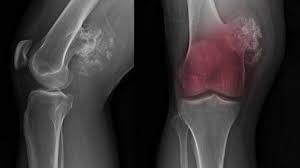In a significant advancement for affordable cancer diagnostics, researchers at the Indian Institute of Technology (BHU) in Varanasi have developed a portable, battery-operated device capable of detecting early-stage bone cancer without the need for traditional lab-based reagents. The innovation is poised to bridge critical diagnostic gaps in rural and resource-limited regions across India.
The device, compact enough to fit in a physician’s pocket, can identify osteopontin (OPN)—a key biomarker for osteosarcoma, a rare but aggressive bone cancer. According to the developers, the technology enables reagent-free, real-time detection, eliminating reliance on costly chemicals or lab infrastructure.
A Glucometer for Bone Cancer
The diagnostic tool functions similarly to a glucose meter, using a gold nanocomposite and redox-active materials to measure OPN levels from a buffer solution. The test is self-contained, requires no external processing agents, and delivers rapid results, making it ideal for use in primary health centers and remote clinics.
“Our goal was to develop something that combines sensitivity, portability, and affordability,” said Prof. Pranjal Chandra, lead researcher and faculty at the School of Biochemical Engineering, IIT-BHU. “This device can offer a critical first alert, especially in rural areas where advanced diagnostic tools are out of reach.”
Publication, Patent, and the Road Ahead
The findings were recently published in the journal Nanoscale, a publication of the Royal Society of Chemistry. A patent application has been filed, and the research team is now working on developing a smartphone interface to allow cloud-based monitoring and integration with telemedicine platforms.
Team members Daphika S. Dkhar and Supratim Mahapatra, co-authors of the study, believe the device could drastically improve diagnostic outcomes for children and young adults, the demographic most commonly affected by osteosarcoma.
Affordable Innovation for Public Health
Prof. Amit Patra, Director of IIT-BHU, described the device as an example of “technology with a human face”—a tool that not only embodies scientific excellence but also aligns with national missions such as Make in India and Startup India.
“Early detection saves lives. But early detection also needs to be accessible. This device fits both needs perfectly,” Prof. Patra said.
Osteosarcoma, which often presents late due to lack of symptoms and limited access to diagnostics, has better survival rates when caught early. In many parts of India, however, diagnosis is delayed due to high costs or lack of specialized facilities. The IIT-BHU team’s innovation seeks to change that narrative.
Toward Field Trials and Clinical Use
The device will soon enter clinical validation and field testing stages, after which it may be cleared for commercial and public health deployment. With a low-cost design and a reagent-free mechanism, it could represent a major leap forward in decentralized cancer care.
If adopted widely, the device could pave the way for similar innovations in the diagnosis of other non-communicable diseases—bringing early screening capabilities to the doorsteps of millions.


